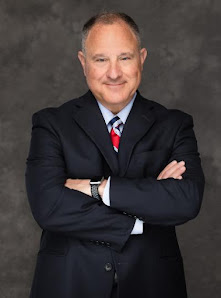Matthew T. Mangino
GateHouse News Service
October 25, 2013
More than 50 years ago, Cleveland police officers went to the home of Dollree Mapp looking for a suspect in a criminal investigation. Mapp refused to let the police in without a warrant.
The police left, and when they returned, they were armed with a “fake” warrant. Chicanery took the place of real police work. Instead of going to a judge to get a warrant, the police drew up their own. After entering to Mapp’s home, police conducted a search and confiscated obscene material resulting in Mapp’s arrest.
So was born the 1961 landmark U.S. Supreme Court decision of Mapp v. Ohio. The court provided a remedy — the exclusion of illegally obtained evidence from admission in a criminal prosecution — for unconstitutional police action.
Forty-seven years before Mapp, the U.S. Supreme Court ruled that evidence collected in federal prosecutions that violated the Fourth Amendment ban against illegal search and seizures would be excluded from trial. The exclusionary rule, as it became known, was only available to defendants in federal court. Mapp v. Ohio changed that and altered the nation’s jurisprudential landscape. As a result, state prosecutors were also banned from using evidence gained by illegal or improper means.
The rationale behind the exclusionary rule was to deter police misconduct. If police intentionally circumvented their obligation to get a search warrant or if the police were just inept, the penalty would be significant — the inability to use the evidence illegally obtained.
Many Supreme Court observers suggested that the Mapp decision would be detrimental to law enforcement. The courts would be inundated with challenges and the guilty would go free in droves. The exclusionary rule has been the target of a 50-year assault by conservatives that contend the rule is a boondoggle for criminals.
Over the last half-century, the Supreme Court has whittled away at the exclusionary rule. The court has ruled that the exclusionary rule does not apply if the police obtained no advantage by their unlawful conduct, if a warrant was improvidently issued by a judge, or if a valid warrant was illegally served.
In 2009, the assault on the exclusionary rule continued. The Supreme Court found that evidence confiscated as the result of an arrest that was the product of an expired warrant was not subject to exclusion. The court found that negligence by one police department in failing to remove a warrant did not contaminate evidence obtained by a different police department that was unaware of the invalid arrest warrant.
In 2011, the 50th anniversary of the Mapp decision, the U.S. Supreme Court further narrowed the exclusionary rule. Police in Alabama arrested Willie Davis. After he was handcuffed and placed in the backseat of a police cruiser Davis’ car was searched. The police found a gun. The police were in conformity with the law as it existed at the time the warrantless search of Davis’ car was conducted.
Subsequently, the law changed and Davis sought to have the evidence excluded. The Supreme Court refused to exclude the evidence. Justice Samuel Alito concluded that suppression of evidence as the result of a change in the law, a change that came after a lawful search, “would do nothing to deter police misconduct.”
What the exclusionary rule actually produced was improved police work. Ironically, several years ago Justice Antonin Scalia cited “increasing professionalism of police” as a reason for the exclusionary rule’s obsolescence.
The law enforcement training that grew out of the Mapp decision has enhanced the quality of police investigations and protected the rights of individual citizens. The exclusionary rule’s contribution to the criminal justice system cannot be overstated.
Matthew T. Mangino is of counsel with Luxenberg, Garbett, Kelly and George and the former district attorney for Lawrence County, Pa. You can read his blog at www.mattmangino.com and follow him on Twitter at @MatthewTMangino.
Visit the Column
Betty Rice's Suspicious Death
5 hours ago








No comments:
Post a Comment